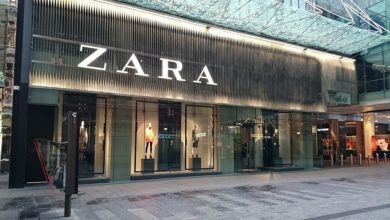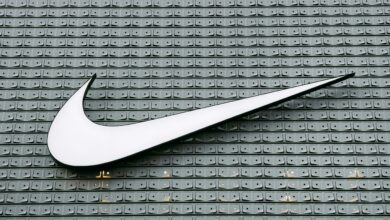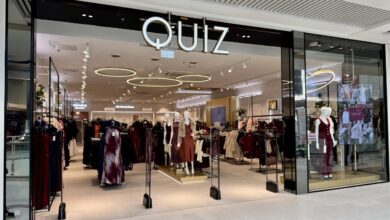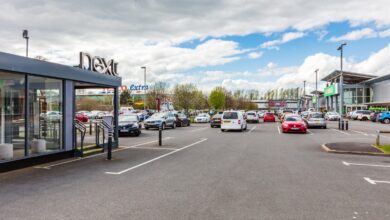How can the physical retail sector win its battle to survive?
By Nav Sahota, Partner at Reed Smith

Register to get 1 free article
Reveal the article below by registering for our email newsletter.
Want unlimited access? View Plans
Already have an account? Sign in
It is well known that the high street is battling for survival. Insolvency statistics released this month show a 17% increase in company insolvencies compared to this month last year, with the retail sector particularly badly hit. With the closure of many Body Shop stores already confirmed this year, and further question marks hanging over the future of stalwarts such as Currys and Superdry, the high street is in desperate need of an enlivening boost.
However, doom and gloom around the high street is not the whole picture for the physical retail sector. There remain key battlegrounds across the wider in-store industry where the fight to survive is playing out more closely. So, where are the silver linings and what can be done to re-energise the industry?
Online vs physical retail – it’s not a one-way fight
Given widespread closures of shops and the shift towards an increasingly online life, many assume that UK shopping habits are also inevitably heading towards an online existence.
This is not strictly the case. Whilst a marked shift towards digital buying cannot be denied – especially post-Covid – the in-person experience has retained its appeal. In 2023, there was in fact a surge in shopping in physical shops, according to Deloitte’s Retail Trends Report.
This trend made itself clear, for example, in the proliferation of pop-up shops. These epitomise the twin aspects of modern shopping preferences – in-person, fun, and on-trend; but also flexible, taking advantage of the possibility of short-term letting of retail spaces.
They are the shopping equivalent of post-Covid co-working office spaces. Shopping centres have had to pivot with outlets that need filling, and, through a focus on providing wider amenities and food and leisure, have increased footfall. With this trend of “experience-based” shopping, centres have repurposed themselves to include crazy golf, children’s activities, and at London’s Westfield, innovative VR experiences.
This in-person resurgence demonstrates a reassuring persisting appetite for physical shopping. It also provides valuable insight for how wider retail outlets can keep themselves relevant to customers.
The ‘lipstick effect’ – small treats, big impact
Despite strains on household spending, alongside the demand for experiential retail, there are wider signs that consumers are not cutting back altogether. Known as ‘the lipstick effect’, the sale of small, indulgent items amid times of economic hardship has remained robust. Whilst consumers are cutting back across spending generally, they are still buying small treats when possible.
This explains why, for instance, the cosmetic industry has remained unexpectedly healthy in recent years. Food-anchored retail has also maintained buoyancy during these latest crises.
A key takeaway for the wider retail market is the enduring consumer interest in luxury items. This also comes back to the idea of shopping as an experience – VR, theatres, and art in shopping centres all add to that indulgent feel on a day out. Luxury, on whatever scale, will be another essential tool for outlets to harness to reignite the retail sector.
Tax-free tourist shopping – the international front
Energising the UK’s retail sector cannot rely on domestic consumers alone, however. As part of Brexit plans, in 2020 the government abolished tax-free tourist shopping.
This has had an acutely adverse effect on the UK retail sector – the Centre for Economics and Business Research (CEBR) found this has cost our GDP £10.7bn a year.
There has been much campaigning to reverse this decision. Multiple high-profile companies, including Gucci, Tiffany, and De Beers, wrote an open letter to the government calling for a reconsideration. Airports such as Heathrow have also added their voice, having suffered when luxury brands have not renewed leases in airports after being hit by significantly decreased footfall. Despite this clamouring, the tax was not reinstated in the chancellor’s Spring Budget.
There are of course costs involved in reinstating the tax. However, the detailed CEBR research presents a strong case for benefits to the retail sector far surpassing any costs.
This is especially clear when comparing the UK’s lacklustre bounce back in tourist expenditure post-Covid to that in countries such as France, Italy and Spain, where tax-free tourism remains. The number of tourists in the UK is increasing post-Covid (10.9 million in the last quarter of 2023, according to the ONS), but expenditure is still not at pre-Covid levels – unlike in other European countries.
For instance, the Gulf Cooperation Council countries spent £2bn in tax-free shopping in Europe in 2019, of which 66% was in the UK. Conversely, in 2022 expenditure in the UK was 35% less, but 108% higher in France.
The UK retail market is losing its market share during this challenging period to other European countries, with the suspension of tax-free tourist shopping a key factor.
If the government brought the policy back, it would not only give a desperately needed boost to the retail market to make up lost ground – it would also create valuable knock-on effects from increased tourism. Tourists contribute to the number of customers in physical shops, and spend money in hotels and hospitality sites, in turn also ultimately creating employment opportunities. Tax-free tourist shopping is a vital weapon to add to the retail market’s arsenal in its battle to survive.
Cause for optimism
The retail market, particularly the high street, is certainly facing problems. However, there are encouraging signs of life across the sector and now is the time to encourage these green shoots of growth. Retail outlets should seize the chance to jump on consumer trends and use them as a springboard for further growth. Alongside this, the government needs to give the market the helping hand it urgently needs.
Online shopping is here to stay, but so – it gladly seems – is physical shopping. With consumers enjoying increasingly immersive experiences with VR in theatre and art, these innovative novel experiences with an emphasis on luxury may help continue the rise of more consumers visiting physical shops. Increased footfall, and demand from tourists too, should contribute towards a renewed excitement in the UK’s retail sector.







